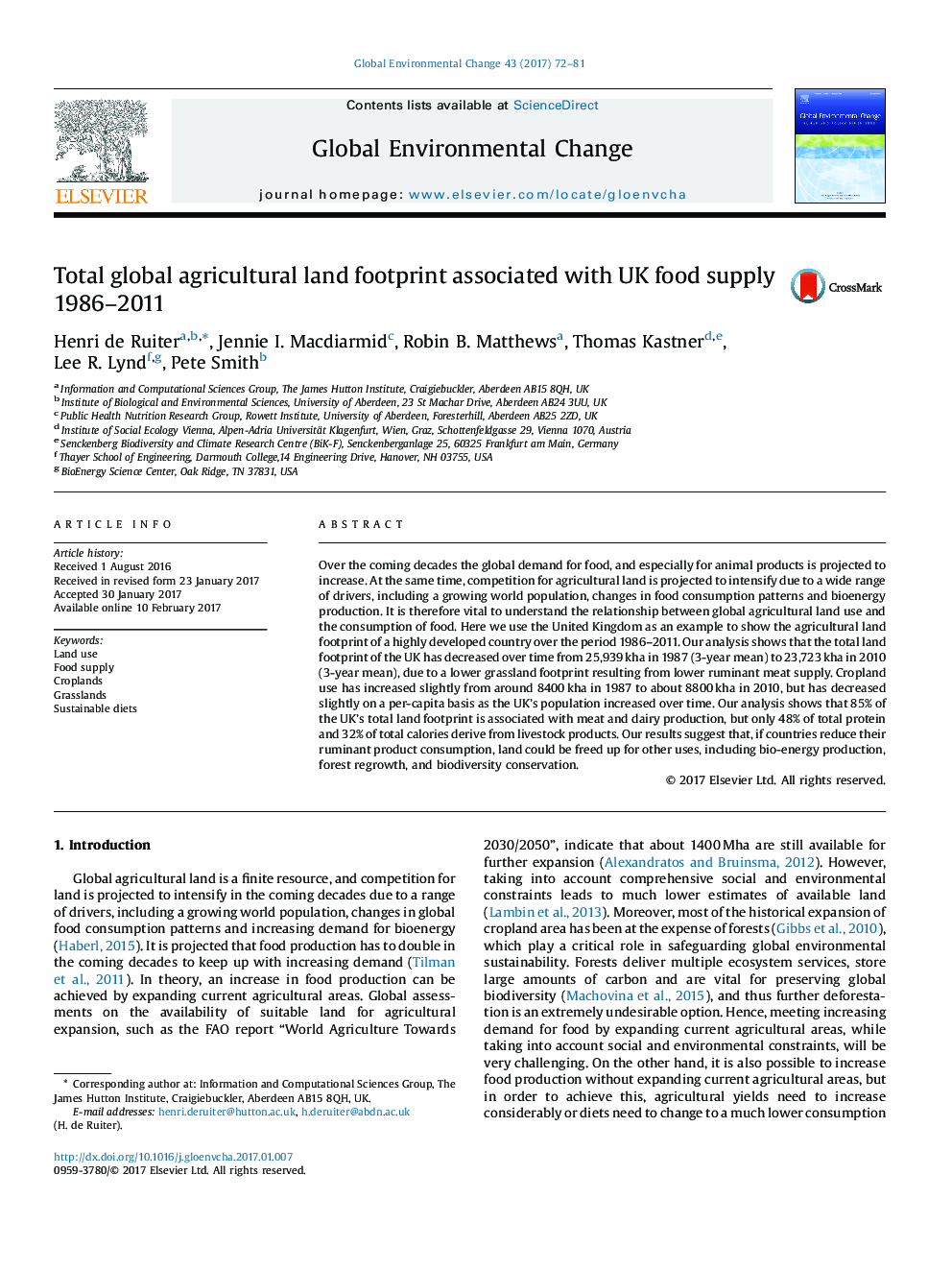| Article ID | Journal | Published Year | Pages | File Type |
|---|---|---|---|---|
| 5115958 | Global Environmental Change | 2017 | 10 Pages |
â¢We quantify the global agricultural footprint associated with UK food supply.â¢We show the land footprint of UK food supply has decreased between 1986 and 2011.â¢Grassland footprint has decreased, while cropland footprint has increased slightly.â¢85% of the UK's total land footprint is associated with animal products.â¢Only 48% of total protein and 32% of total calories derive from animal products.
Over the coming decades the global demand for food, and especially for animal products is projected to increase. At the same time, competition for agricultural land is projected to intensify due to a wide range of drivers, including a growing world population, changes in food consumption patterns and bioenergy production. It is therefore vital to understand the relationship between global agricultural land use and the consumption of food. Here we use the United Kingdom as an example to show the agricultural land footprint of a highly developed country over the period 1986-2011. Our analysis shows that the total land footprint of the UK has decreased over time from 25,939Â kha in 1987 (3-year mean) to 23,723Â kha in 2010 (3-year mean), due to a lower grassland footprint resulting from lower ruminant meat supply. Cropland use has increased slightly from around 8400Â kha in 1987 to about 8800Â kha in 2010, but has decreased slightly on a per-capita basis as the UK's population increased over time. Our analysis shows that 85% of the UK's total land footprint is associated with meat and dairy production, but only 48% of total protein and 32% of total calories derive from livestock products. Our results suggest that, if countries reduce their ruminant product consumption, land could be freed up for other uses, including bio-energy production, forest regrowth, and biodiversity conservation.
